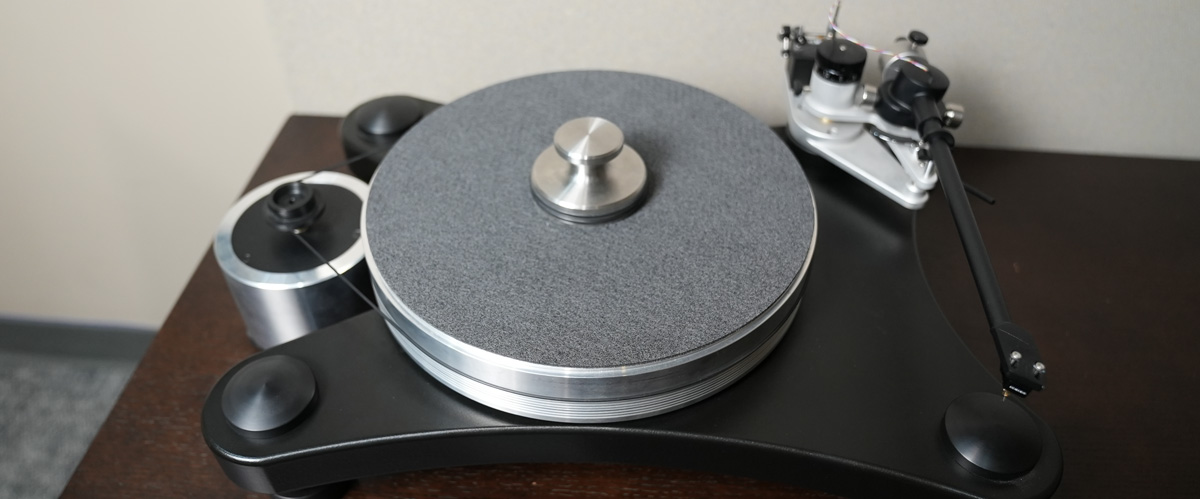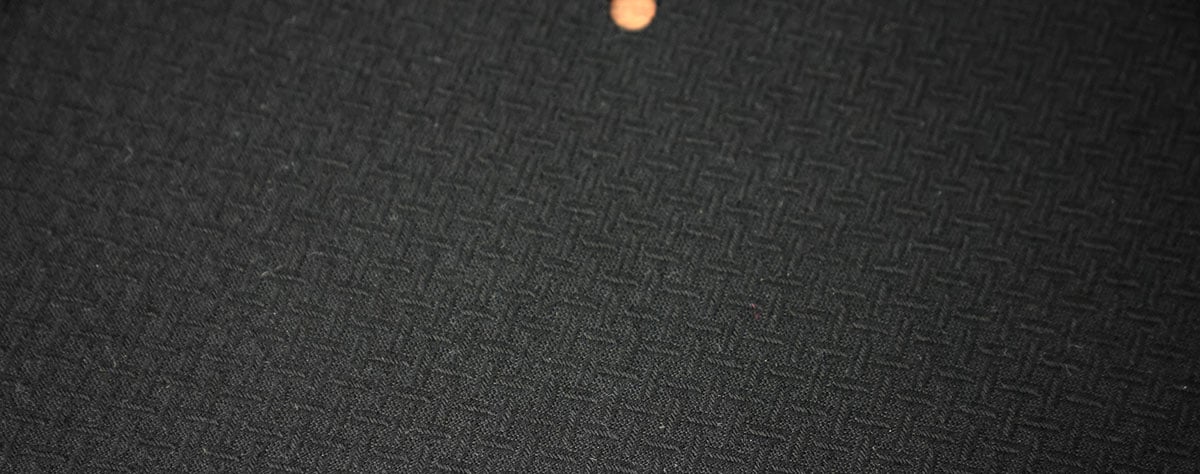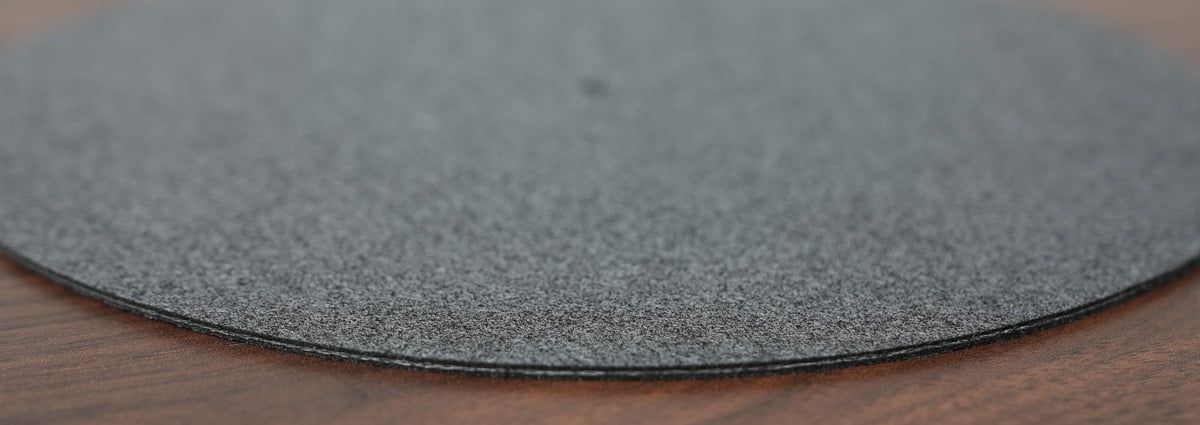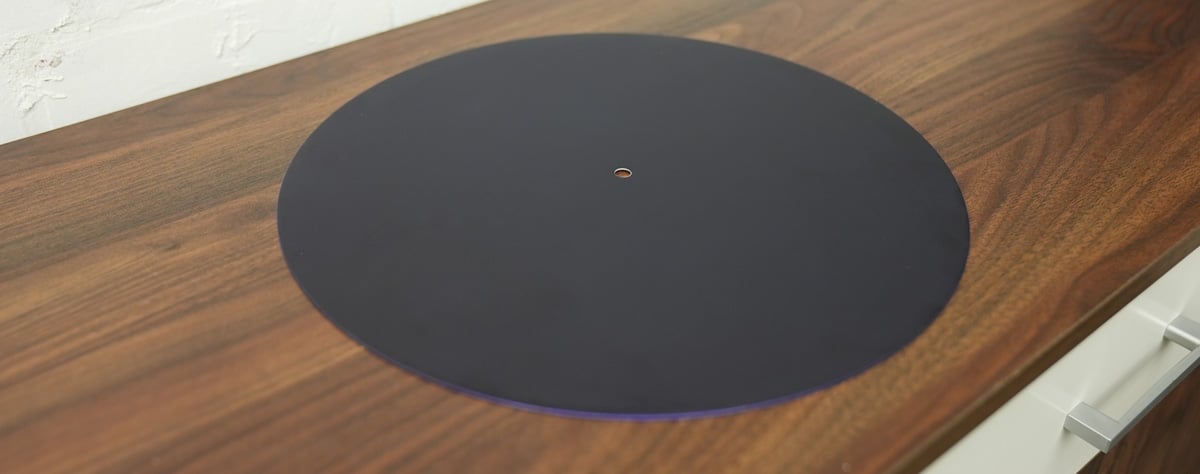Eversolo Setup Tips & Tricks
Explore our complete setup guide for Eversolo DMP-A6, DMP-A6 Master Edition,and DMP-A8 to get up & running fast! Here, we’ll walk you through our exclusive tips & tricks for for a quick & easy set up.
...There are some easy ways to eliminate static cling from your turntable for better sound.
This is an overview of three outstanding turntable mats from Auditorium of Germany and SPEC of Japan. Aftermarket turntable mats have been around since the 1970s as an accessory vinyl lovers could add to their turntable with the goal being improved sound, updated appearance, a reduction in static, or all three.
Most turntables these days come with a stock felt mat or have a platter that is made out of a material designed to be used without a mat to eliminate static cling. Felt mats are the dominant type of mat on the majority of turntables on the market. But felt mats have one inherent large problem, and that is static. The static charge on a felt mat will hold debris and dust on the mat. and of course, some of that dust and debris can be transferred to your clean record when you put it down on the mat. During the colder and drier times of the year, static cling gets so bad that a felt mat will stick to your record when you pull it off the platter, which makes for a huge pain to get it off without touching the surface of the record with our oily fingertips.
As a result of issues like static cling, there are all kinds of record mats on the market using a wide range of materials such as rubber, cork, leather, recycled vinyl, different kinds of fabrics and more. Some mats are even designed more as a decoration than a useful accessory.
So, if you do have a turntable with a felt mat and are experiencing static cling issues, how do you choose the best one? It’s actually a bit more complicated than you might think.
Turntable mats can have a pretty decent impact on the sound, but it may be they just change it for the worse and don’t really make it better.

There are a few things to consider. If your turntable came with an integrated tonearm, it is likely the engineers designed the turntable using the stock mat when they were doing their listening tests. So, there is an argument that you do not want to make a major change in materials for your new mat.
A more important consideration is the height of the turntable mat in comparison to the stock mat. As a general rule, you want your tonearm to be parallel to the record surface. Many turntables do not give you the ability to raise or lower the height of the tonearm. This means that if you switch out your mat for one that is a lot thicker, you are going to cause the back of the tonearm to be too low. If your tonearm can be adjusted in height, that is great… but if it cannot, you need to think about that before buying a mat that is significantly thicker than your stock mat.
Since the main culprit of static cling is a felt mat, we decided to look at several felt mats on various turntables and find their average thickness. Most of the flimsy ones, which are the type prone to static build up, average 1.5mm thick.
Finally, there is the weight of the aftermarket mat. For most turntables, this will not be a big consideration as for a good number of turntables, the platter does not sit on any kind of special suspension system. But if your turntable does have a spring suspension system, getting a mat that is far too heavy (or a clamp for that matter) can change the resonance point of your turntable. Now, bear in mind records themselves vary in weight from around 100 grams to 230, so fairly lightweight mats are ok, but some aftermarket mats weigh several hundred, or even greater than 1000 grams, which can affect the suspension system of your turntable.
With these important considerations in mind, we set out to find some great performing mats that should work well for most turntables while improving the sound and eliminating all the annoying static cling issues.
The first, and least expensive, is the Auditorium 23 Turntable Mat. Auditorium 23 is a German company that has been around for quite a long time. Their main business is very expensive speakers, mostly using a horn-type design. They also make phono step up transformers and cables.
There is virtually no information available about the composition of their two mats. Even the company that imports them into the US could tell us very little about them other than they experiment with different materials and use listening tests to come up with the best sound.
The Auditorium 23 mat, at first glance, looks like a normal felt mat. We weighed and measured all of these and the great news is, it is very close in weight and thickness to almost every stock felt mat on the market. It only weighs 56 grams and is 1.1 mm thick, which is really close to the average felt mat thickness of 1.5 mm. This means you will not have to adjust your tonearm height or worry about it being too heavy — all great news.
This mat is definitely two-sided. The top side has an ever so slightly raised cross-hatch pattern on it. If you look closely, you can see each of the cross hatches has a woven pattern in it and the area around them has a different woven pattern. The back of the mat is flat with the same type of woven pattern you see in between the cross-hatch pattern on the top. This mat flops around a little bit less than a typical felt mat, but obviously, with its unique construction, is not just a standard felt mat. It does not feel as soft as a felt mat and almost feels like there is a tiny bit of stiffness woven in. But since it is similar in material to a felt mat, it should be a perfect upgrade over your stock felt mat to eliminate static cling.

We had zero cases of this mat sticking to a record from static cling, which is great. It might tend to grab some of the dust that is on your record, but for some reason, those tiny specs will stay on the mat and not transfer to another record, at least in our observations. We were able to brush these off with an inexpensive carbon fiber brush or the type of brush you might clean a pool table with. It was far easier to brush off than a regular felt mat.
With the Auditorium 23 mat having almost identical physical characteristics to a stock felt mat and the elimination of static cling and dust transfer, that alone makes it worth the price of admission for most turntables. But as an added bonus, to our ears, it also improved the audio. We heard an improvement in dynamics and a bit more separation between instruments and some turntables but on others, the difference jumped out even more Even if we had heard no change, if you have static problems and don’t want to be concerned about changing the character of the design of your turntable, this mat is an outstanding choice!
The best mat from Auditorium 23 is called their Hommage Turntable Mat. This one is made quite differently from the basic model. Again, there is no information available about its construction but to the eye, it appears to be made of three layers of material. There is what feels like a textured wool on the top and bottom with something that is probably stiff in the center. What that is, we do not know, but this mat does not flop around like a felt mat and is a little stiff although it still easily bends.
We think this is still a very good replacement for most felt mats with one small caveat. It does not weigh that much more at only 100 grams, but it is slightly thicker than a typical felt mat at 2.5 mm thick. With this only 1 mm more than the average felt mat in thickness, it should work well on most tables without needing to adjust the VTA unless you have a cartridge that is super sensitive to VTA changes.
Just like with the other Auditorium 23 mat, we had no static problems with the mat sticking to the record, and this one does not seem to hold any dust or small particles either.
The audio improvements we heard with the smaller version jumped out even more to us with this mat. Dynamics really came to life and the texture of voices improved quite a bit. It also felt like to us we were hearing less surface noise, although we can not explain why.

Obviously, a mat in this price range is not going to find a home on $400-$600 turntables, but if you have a higher-end table with a felt type mat it's a great choice to get rid of static issues and improve your sound at the same time.
The SPEC mat was the most expensive of the bunch, but that price gets you some pretty big audio improvements. This mat is very stiff yet quite thin like a stock felt mat. It is made of aluminum and then coated with a special material the people at SPEC claim is very similar to the material used on the master stamper of a record. It actually feels ever so slightly soft to the touch and is in a matte finish. You will want to be careful and just brush it off as any cleaner with alcohol in it will damage the resin in the outer finish.
The SPEC mat is heavier than the other two, but still not crazy heavy like some mats as it weighed in at 230 grams. When we put this on a Linn LP12, we did not notice any change in the deflection of the suspension system, so it's probably light enough to use on most sprung tables. It is also very thin at 1.7 mm so you could add it to any table and not have to really worry about VTA.
We had zero static or dust capture problems with the SPEC mat. It seems perfect in that regard. There is one thing about it that took some getting used to. It is slightly larger in diameter than a record. You have to learn a new way to lift up the disc off the record, but once we got used to this, it came naturally.
 SPEC AP-UD1 Turntable Mat
SPEC AP-UD1 Turntable Mat
With the SPEC mat, we did not hear any reduction in surface noise but boy did the dynamics improve. It felt like this was taking us closer to a live performance as you could hear subtle volume changes easier in instruments and voices giving you more of that you are there feeling.
We see the SPEC mat being used on more expensive turntables that came with a felt mat for users who are looking to take their sound to a new level. Or if you have a turntable that is designed to not be used with a mat, this one will probably offer an improvement over the stock platter.

We were really happy to find these three mats and be able to deliver them to all of our vinyl lovers out there. For most people, the basic Auditorium 23 mat will be the best choice, but if you have a nice turntable rig, you should consider the better ones. And the best part about all of them is no more static cling!
Explore our complete setup guide for Eversolo DMP-A6, DMP-A6 Master Edition,and DMP-A8 to get up & running fast! Here, we’ll walk you through our exclusive tips & tricks for for a quick & easy set up.
...In this home theater showcase, we give you a behind-the-scenes look at the entire process of upgrading our existing theater inside our Raleigh showroom. From start to finish, our timelapse video shows each part of this project, along with the components we used and why we selected them. Watch now to see how an outdated room was transformed into ...
While some audio companies have been around for decades and have set the standard for many of the great audio devices we know and love today, the Eversolo brand is relatively new to the game and is already playing in the big leagues. The Eversolo DMP-A6, DMP-A6 Master Edition, and DMP-A8 the three streamer/DAC/preamp units that we reviewed &...
Explore our complete setup guide for NAD Masters M66 to get up & running fast! Here, we’ll walk you through our exclusive tips & tricks for for a quick & easy set up.
...The new Classic Series from JBL takes its inspiration from vintage gear of the 60s yet is full of the latest audio technology to give you the best fidelity with a retro look and feel. While each of the 4 units can stand on their own, they look and sound wonderful as a stack. Learn about this great new integrated amp, turntable, streamer, and CD ...
Step inside a truly remarkable home theater meticulously designed to captivate your senses and leave you in awe. With cutting-edge technology, extraordinary movie statues and memorabilia, and impeccable attention to detail, this cinematic sanctuary is a haven for film enthusiasts and connoisseurs alike.
...ARCAM’s exciting rebranding journey begins with the cutting-edge Radia Series, featuring five new units. Join us as we delve into the world of the Radia Series, where we discover the technology & features packed inside and then put them to the test to see if ARCAM has yet again hit a home run in the world of audio innovation.
...The new Marantz Model 50 integrated amp and CD50n CD player/music streamer take what they learned in the Model 30 series and offer very similar sound and build quality for a much lower cost of entry. The all analog Model 50 sounded just amazing to us and is built like a tank, while the CD50n can be a wonderful digital centerpiece.
...Take your home theater experience to the next level with the new RMB-1585 MKIi and RMB-1587 MKII. These amplifiers feature pure class A/B topology with enough power reserves for the most dynamic movie soundtracks! While 4 thermostat-controlled cooling fans to keep things cool.
...Building a Home Theater in a non-traditional room can be difficult. In this Home Theater showcase, we toured a room with angled ceilings, a bar in the back, and other design challenges. We walk you through how we used our Free Home Theater Tool and other design practices to overcome these challenges and build a killer, immersive 7.2.4 theater.